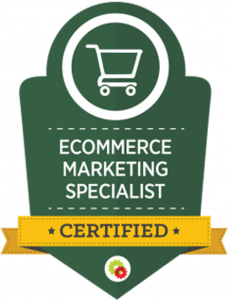Building a Brand Guide | DiginamiX Marketing
The Ultimate Guide to Building a Brand
Building a brand is a crucial step in establishing a successful business. It allows you to create a unique identity that resonates with your target audience and sets you apart from your competitors. In this ultimate guide to building a brand, we will explore the key elements and strategies that will help you develop a strong and memorable brand.
Understanding the Basics of Branding
Branding is a crucial aspect of any business, as it encompasses the process of creating a distinct and recognizable image for your company. It goes beyond just having a logo or a catchy tagline; it is about shaping the overall perception that people have of your business. A strong brand effectively communicates your values, beliefs, and mission, forging a deep connection with your customers.
When it comes to branding, it is important to understand that it is not just limited to the visual elements of your business. While a well-designed logo and appealing color scheme are essential, branding also involves the tone of voice you use in your communication, the experiences you create for your customers, and the emotions you evoke through your brand identity.
What is Branding?
Branding encompasses a wide range of strategies and techniques aimed at creating a unique and memorable identity for your business. It involves meticulous planning and execution to ensure that every aspect of your brand aligns with your core values and resonates with your target audience.
One of the key components of branding is establishing a consistent brand identity. This includes developing a logo that represents your business and designing marketing materials that reflect your brand's personality. Additionally, it involves crafting a compelling brand story that effectively communicates your company's mission and values.
Moreover, branding extends beyond the visual elements to encompass the overall customer experience. It involves creating a consistent and positive experience at every touchpoint, from the moment a customer interacts with your brand to the post-purchase stage. This includes aspects such as customer service, packaging, website design, and even the ambiance of your physical store.
Importance of Branding in Today's Market
In today's highly competitive market, where consumers are bombarded with countless similar products and services, having a strong brand is more important than ever. A well-established brand helps consumers differentiate your business from others, making it easier for them to make informed decisions.
One of the primary benefits of branding is that it builds trust and loyalty among customers. When people have a positive experience with your brand and resonate with its values, they are more likely to become loyal customers and even brand advocates. This not only leads to repeat business but also helps attract new customers through positive word-of-mouth referrals.
Furthermore, a strong brand creates a sense of credibility and professionalism. It signals to potential customers that your business is reliable and trustworthy, giving them the confidence to choose your products or services over competitors.
Another advantage of branding is that it allows you to charge a premium for your products or services. When customers perceive your brand as being of high quality and value, they are willing to pay more for it. This can significantly impact your profitability and help you achieve sustainable growth.
In conclusion, branding plays a crucial role in shaping the perception of your business and building a strong connection with your customers. It goes beyond just visual elements and encompasses every aspect of your brand's identity and customer experience. In today's competitive market, investing in branding is essential for standing out from the crowd and establishing a lasting presence.
Defining Your Brand's Identity
When it comes to building a successful brand, one of the first steps is to define your brand's identity. This involves establishing your brand's mission and vision, as well as identifying your brand's values.
Establishing Your Brand's Mission and Vision
Before you can start building your brand, it is crucial to define your mission and vision. Your mission statement outlines the purpose of your business, while your vision statement sets the long-term goals you aim to achieve. These statements serve as guiding principles for your brand and shape the way you operate.
When crafting your mission statement, it is important to consider the core values and beliefs that drive your business. What problem are you solving? What value are you providing to your customers? By clearly defining your mission, you can communicate your brand's purpose effectively to your target audience.
Similarly, your vision statement should articulate the future direction of your brand. What do you aspire to achieve in the long run? How do you envision your brand making a positive impact on the world? By setting ambitious yet realistic goals, you can inspire your team and attract customers who resonate with your brand's vision.
Identifying Your Brand's Values
Another crucial aspect of defining your brand's identity is identifying your brand's values. These values are the beliefs and principles your business stands for. By clearly defining your core values, you can ensure that all aspects of your brand, from your messaging to your customer experience, align with these principles. This consistency in values creates a strong brand identity.
When identifying your brand's values, it is important to consider what matters most to your business. What do you stand for? What principles guide your decision-making process? By aligning your brand with values that resonate with your target audience, you can build trust and loyalty among your customers.
Moreover, your brand's values should be reflected in every interaction with your customers. From the way you communicate to the products or services you offer, your brand's values should shine through. This consistency helps build a strong brand identity and fosters a sense of trust and authenticity with your audience.
In conclusion, defining your brand's identity is a crucial step in building a successful brand. By establishing your brand's mission and vision, as well as identifying your brand's values, you can create a strong foundation for your brand and attract customers who resonate with your purpose and beliefs.
Knowing Your Target Audience
Understanding your target audience is vital for building a brand that resonates with your customers. Market research enables you to gather insights about their preferences, needs, and behaviors. This information helps you tailor your brand messaging and offerings to better meet their expectations.
Market research involves a systematic process of collecting and analyzing data about your target audience. It helps you gain a deeper understanding of their demographics, psychographics, and buying behaviors. By conducting surveys, interviews, and focus groups, you can gather valuable information that will guide your marketing strategies.
One of the key benefits of market research is that it allows you to identify trends and patterns among your target audience. For example, you may discover that a significant portion of your audience prefers eco-friendly products or values convenience above all else. Armed with this knowledge, you can position your brand as environmentally conscious or emphasize the convenience of your offerings.
Creating Customer Personas
Customer personas are fictional representations of your ideal customers. By creating detailed personas, you can better understand their demographics, motivations, and pain points. This knowledge allows you to tailor your brand's messaging and experiences to connect with your target audience on a deeper level.
When creating customer personas, it's important to gather data from various sources, including market research, customer surveys, and social media analytics. This ensures that your personas are based on real insights rather than assumptions.
Each customer persona should include information such as age, gender, occupation, interests, and goals. You can also include details about their challenges, fears, and aspirations. This level of detail helps you understand the unique needs and desires of each persona, allowing you to create targeted marketing campaigns that resonate with them.
For example, let's say you're a fitness brand targeting millennials. One of your customer personas could be "Active Amy," a 25-year-old female who works in a fast-paced corporate job. She is passionate about fitness and values convenience in her workout routine. Armed with this persona, you can create content and experiences that cater to Amy's specific needs, such as offering quick and effective workout routines that can be done at home or during her lunch break.
Designing Your Brand's Visual Identity
Choosing the Right Logo
Your logo is a visual representation of your brand and plays a crucial role in building brand recognition. When designing your logo, consider how it reflects your brand's personality and values. A well-designed logo should be simple, scalable, and easily recognizable across various platforms.
Selecting Your Brand's Color Palette
Colors evoke emotions and can have a significant impact on your brand's perception. When selecting your brand's color palette, consider the feelings and associations each color represents. Choose colors that align with your brand's personality and create a cohesive visual identity.
Developing a Brand Voice
Understanding Brand Tone and Personality
Your brand voice is the way you communicate with your audience. It should reflect your brand's tone and personality. Consider the characteristics you want your brand to embody, such as friendly, professional, or innovative. Consistency in your brand voice across all channels creates a strong and recognizable brand presence.
Consistency in Brand Messaging
Consistency is key when it comes to building a strong brand. Your brand messaging should align with your brand's values, voice, and visual identity. Whether it's your website, social media posts, or customer interactions, maintaining consistency in your messaging helps reinforce your brand's image and build trust with your audience.
Building a brand is a multifaceted process that requires careful consideration and strategic planning. By understanding the basics of branding, defining your brand's identity, knowing your target audience, designing a compelling visual identity, and developing a consistent brand voice, you can create a brand that stands out in today's competitive market. Take the time to invest in building and nurturing your brand, and you'll reap the rewards of increased recognition, customer loyalty, and business success.



















